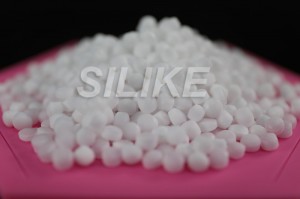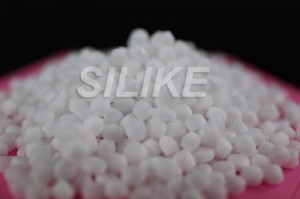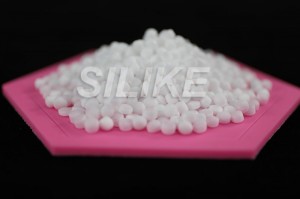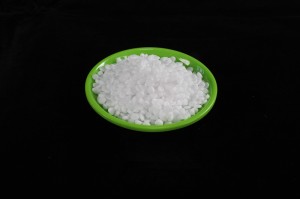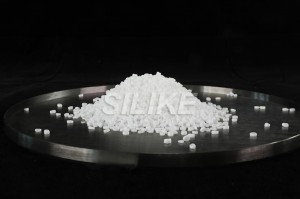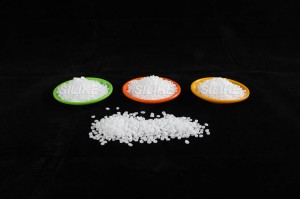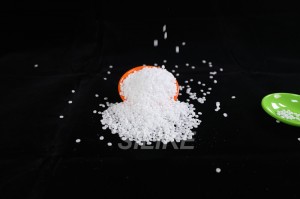Solutions for Reducing COF in HDPE Telecom Duct
Solutions for Reducing COF in HDPE Telecom Duct,
Microduct, Reduce the COF of your HDPE telecom duct, Silicone Masterbatch, Siloxane Additives, SiPE MB Silicone alternative item,
Description
Silicone Masterbatch ( Siloxane Masterbatch ) LYSI-404 is a pelletized formulation with 50% ultra high molecular weight siloxane polymer dispersed in High-density polyethylene (HDPE ). It is widely used as an efficient additive in PE compatible resin system to improve the processing properties and modify surface quality.
Compare to conventional lower molecular weight Silicone / Siloxane additives,like Silicone oil, silicone fluids or other type processing additives, SILIKE Silicone Masterbatch LYSI series are expected to give improved benefits, eg,. Less screw slippage , improved mold release, reduce die drool, a permanent low coefficient of friction (COF), fewer paint and printing problems, and a broader range of performance capabilities.
Fundamental Parameters
|
Grade |
LYSI-404 |
|
Appearance |
White pellet |
|
Silicone content % |
50 |
|
Resin base |
HDPE |
|
Melt index ( 230℃, 2.16KG ) g/10min |
22.0( typical value ) |
|
Dosage% (w/w) |
0.5~5 |
Benefits
(1) Improve processing properties including better flow ability , reduced extrusion die drool , less extruder torque , better molding filling & release
(2) Improve surface quality like surface slip, lower Coefficient of friction, Greater abrasion & scratch resistance
(3) Faster throughput , reduce product defect rate.
(4) Enhance stability compare with traditional processing aid or lubricants
Applications
(1) Silicone core pipe / Optic fiber duct / PLB HDPE pipe
(2) Several way microduct / Conduit
(3) Large diameter pipe
(4) Packaging boxes, bottles ( to improve the surface smoothness )
(5) Other PE compatible systems
How to use
SILIKE LYSI series silicone masterbatch may be processed in the same way as the resin carrier on which they based. It can be used in classical melt blending process like Single /Twin screw extruder, injection molding. A physical blend with virgin polymer pellets is recommended .
Recommend dosage
When added to polyethylene or similar thermoplastic at 0.2 to 1% , improved processing and flow of the resin is expected, including better mold filling, less extruder torque, internal lubricants, mold release and faster throughput; At a higher addition level , 2~5%, improved surface properties are expected, including lubricity , slip, lower coefficient of friction and greater mar/scratch and abrasion resistance
Package
25Kg / bag , craft paper bag
Storage
Transport as non-hazardous chemical. Store in a cool , well ventilated place .
Shelf life
Original characteristics remain intact for 24 months from the production date , if kept in recommend storage.
Chengdu Silike Technology Co., Ltd is a manufacturer and supplier of silicone material, who has dedicated to R&D of the combination of Silicone with thermoplastics for 20+ years, products including but not limited to Silicone masterbatch , Silicone powder, Anti-scratch masterbatch, Super-slip Masterbatch, Anti-abrasion masterbatch, Anti-Squeaking masterbatch, Silicone wax and Silicone-Thermoplastic Vulcanizate(Si-TPV), for more details and test data, please feel free to contact Ms.Amy Wang Email: amy.wang@silike.cnThe use of high-density polyethylene (HDPE) telecom ducts is becoming increasingly popular in the telecommunications industry due to its superior strength and durability. However, HDPE telecom ducts are prone to developing a phenomenon known as “coefficient of friction” (COF) reduction. This can lead to a decrease in the performance of the ducts, resulting in decreased signal quality and reliability. Fortunately, there are several methods that can be used to reduce COF in HDPE telecom ducts.
One of the most effective methods for reducing COF in HDPE telecom ducts is by using a lubricant. A lubricant can be applied directly to the inside of the duct or sprayed onto the outside surface. This will reduce friction between the walls of the duct and any cables that are running through it, resulting in improved signal quality and reliability. Additionally, lubricants can also help protect against corrosion and wear on the inside of the ducts, further increasing their lifespan.
Another method for reducing COF in HDPE telecom ducts is by using a special coating or liner on the inside walls of the ducts. These coatings or liners are designed to reduce friction between cables and walls, resulting in improved signal quality and reliability. Additionally, these coatings or liners can also help protect against corrosion and wear on the inside of the ducts, further increasing their lifespan.
Finally, another method for reducing COF in HDPE telecom ducts is by using an air-filled cushioning material between cables and walls. This cushioning material helps reduce friction between cables and walls while also providing additional protection against corrosion and wear on the inside of the ducts. This method is particularly useful when dealing with long runs of cable as it helps ensure that signals remain strong throughout their entire journey through a given conduit system.
SILIKE’s silicone masterbatch LYSI-404 as lubricant. Solutions for Reducing COF in HDPE Telecom Duct
FREE SILICONE ADDITIVES AND Si-TPV SAMPLES MORE THAN 100 GRADES

Sample type
$0
- 50+
grades Silicone Masterbatch
- 10+
grades Silicone Powder
- 10+
grades Anti-scratch Masterbatch
- 10+
grades Anti-abrasion Masterbatch
- 10+
grades Si-TPV
- 8+
grades Silicone Wax



